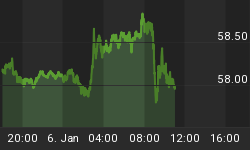Following World War I the German Mark lost all of its purchasing power. However, before its ultimate demise, the Mark experienced several meaningful rallies despite the continuous increase in its circulation. While one may think that economic or political news and rumors led to the Mark's rallies, it is more likely that they resulted from investors becoming overly pessimistic and too one-sided in their positioning - as is the case today with the US Dollar. Investors have universally embraced the belief that additional quantitative easing by the Federal Reserve will destroy the Dollar's purchasing power and thus boost all asset prices. Similar to the German Mark, it is possible that the Dollar will experience meaningful rallies before becoming valueless.
Figure 1 demonstrates that the increase in the circulation of the Mark from October 1918 through February 1920 coincided with a continual depreciation of the Mark's value. However, the Mark then rallied by 60% from February 1920 through June 1920 despite the continual increase in its circulation (Figure 2).
Figure 1. German Mark Depreciation (October 1918 - February 1920)
Source: The Economics of Inflation by Constantino Bresciani - Turroni
Figure 2. German Mark Appreciation (February 1920 - May 1921)
Source: The Economics of Inflation by Constantino Bresciani - Turroni
After June 1920, the Mark resumed its terminal decline as shown in Figure 3.
Figure 3. German Mark Collapse (July 1922 - June 1923)
Source: The Economics of Inflation by Constantino Bresciani - Turroni
The stock market is approaching its highs of the year because of the Dollar's weakness. However, if a currency as doomed as the German Mark could rally, then so can the Dollar. Given that it has become a nearly universal view that the Dollar will continue to fall it is likely that it will soon rally and thus force asset prices lower.
















